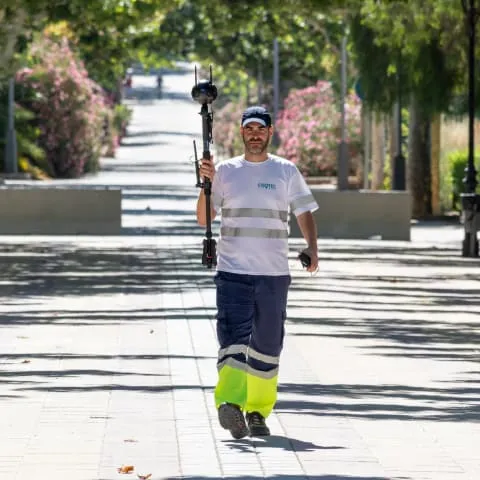
The Spatial Revolution: How GIS is Shaping the Smart Cities of the Future
We live in an increasingly urbanized and digital world. The concept of Smart Cities has become a strategic goal to address the challenges this presents. Parallelly, Geographic Information Systems (GIS) have evolved as powerful tools that allow the analysis and visualization of geospatial data.
The Synergy between GIS and Smart Cities
GIS provide a platform to integrate and analyze data from various sources such as IoT sensors, traffic cameras, and governmental databases. This integration capability makes GIS a valuable tool for decision-making in the planning and management of a Smart City.
For example, Singapore is an excellent example of how GIS can aid in the transformation towards a Smart City. It uses a GIS platform to manage everything, from traffic to natural disasters, and offers this information in real-time to citizens through mobile applications.
Traffic Management and Urban Mobility
GIS offer solutions to enhance the efficiency of public transport, optimize traffic lights and routes, and provide real-time information to drivers. Cities like Los Angeles are using GIS to analyze traffic patterns and design more efficient routes for emergency and public transport services.
Natural Resource Management and Sustainability
GIS allow precise monitoring of natural resource usage, contributing to the design of sustainable use policies. For example, they can assist in identifying areas with higher water consumption to implement more effective conservation strategies.
GIS are also used to monitor air quality and propose low-emission zones. Cities like Madrid have established traffic-restricted areas to reduce pollution, using GIS for their planning and supervision.
Improvement in Emergency Services
GIS are effective tools for planning and coordinating responses during emergencies. They enable authorities to track the real-time location of ambulances, police patrols, and firefighters, ensuring they arrive at the incident site as quickly and safely as possible.
Citizen Participation and Open Government
GIS offer interactive platforms that allow citizens to report issues like potholes in the roads, defective lighting, or illegal activities. This citizen participation not only improves government efficiency but also promotes a sense of community and shared responsibility.
Urban Planning and Real Estate Development
GIS provide valuable data that can be used for urban planning, from identifying areas for real estate development to the design of green zones. Additionally, they allow a deep analysis of land and resource use, facilitating more sustainable urbanization.
We want you to be part of Fisotec through upcoming Did you know? Encourage yourself and send us your proposals to hello@fisotecsolutions.com
